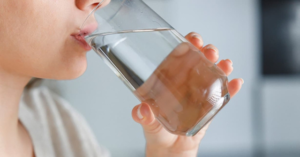Although kidney abscesses are not common, they are a dangerous condition for health. If not treated promptly, a kidney abscess can lead to kidney failure.
1. Can traditional medicine treat kidney abscesses?
A kidney abscess is the presence of a pus-filled cavity around the kidney due to infection of the surrounding soft tissues or peripheral kidney tissue. This condition commonly arises from injuries and infections related to kidney stones.
Traditional medicine cannot cure it but can assist in treatment to enhance and restore the patient’s health.
2. Treatment methods for kidney abscesses
In most patients with acute pyelonephritis, treatment with appropriate antibiotics will show clinical response within one week after starting treatment. However, large kidney abscesses are often difficult to treat with antibiotics alone, with most studies limiting antibiotic treatment for kidney abscesses to lesions smaller than 3 cm.
In most patients suspected of having a renal parenchymal abscess, timely treatment with intravenous antibiotics with a spectrum of action against the specific cultured bacteria is recommended. Additionally, intravenous fluid supplementation may be provided. Medical treatment should be limited to hemodynamically stable patients with abscesses smaller than <3 cm.
Patients with signs of hemodynamic instability due to septicemia or large renal abscess (≥ 3 cm) should undergo drainage either percutaneously or surgically to manage the abscess. Furthermore, treating a pelvic abscess solely with oral medication is inappropriate, as the mortality risk associated with pelvic abscess treated with antibiotics alone can be as high as 33%.
Drainage can be performed surgically or via percutaneous endoscopy after the peritoneum. X-rays and ultrasounds are used to determine the drainage location.
In general, large renal abscesses require drainage if the patient has persistent fever and shows no clinical improvement after one week of antibiotic treatment. Percutaneous drainage combined with systemic antibiotics is indicated as the best treatment for abscesses measuring 3 – 5 cm. Renal abscesses can be drained percutaneously under CT or ultrasound guidance.
When a renal abscess is excessively large, causing complete loss of kidney function or at risk of dangerous rupture into the pelvis, pleura, or abdominal cavity, nephrectomy may be indicated.
Additionally, patients may also use pain relievers or heating pads to alleviate pressure or pain sensations.
3. Can kidney abscess be cured?
Kidney abscess is a dangerous disease for health; if not treated promptly, it can lead to kidney failure. However, if detected early, the disease can be treated effectively. For large abscesses, if medical treatment does not improve the condition, surgical treatment may be performed by draining the abscess and administering antibiotics daily. Patients who are treated early do not suffer much damage to the kidneys, resulting in good outcomes.
4. How to care for the patient at home
At home, patients need to take medication as directed by the doctor. If any unusual symptoms occur during medication, such as itching, nausea, dizziness, chest tightness, or difficulty breathing, they should go to the hospital for examination and treatment.
Wound care: Bandages should be changed once a day at the hospital or at a local healthcare facility if the patient is far from the hospital. Keep the wound clean and dry; if it gets wet, the bandage must be changed immediately.
Diet: Patients should pay attention to drink plenty of water (2.5 liters/day), and supplement with orange and lemon juice. Maintain a normal diet with increased nutrition and vegetables, fruits (like amaranth, jute, sweet potato leaves, sweet potatoes, bananas, papayas…) to avoid constipation.
Avoid stimulants such as overly spicy food, alcohol, beer, and tobacco (as these foods slow wound healing and reduce the effectiveness of treatment medications).
Lifestyle and exercise regimen: Patients need to wipe their bodies with warm water and can bathe after the wound has healed and the stitches have been removed to avoid water coming into contact with the wound, which could cause infection. If bathing, the dressing must be changed immediately after each bath. Avoid heavy labor for one month after surgery. One week after the procedure, gradually increase moderate exercise to improve health.

It is important for patients with kidney abscesses to have a follow-up appointment after finishing their medication to check their condition. They should seek medical attention immediately if there are any abnormal symptoms such as: excessive pain at the puncture wound, swelling, or redness at the puncture site.

